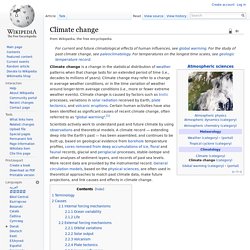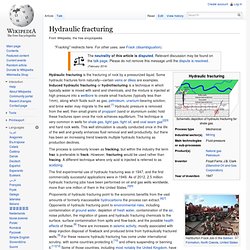

Fracking. Potential Health and Environmental Effects of Hydrofracking in the Williston Basin, Montana. Author: Joe Hoffman This case study is part of a collection of pages developed by students in the 2012 introductory-level Geology and Human Health course in the Department of Earth Sciences, Montana State University.

Learn more about this project. Hydrofracking is a controversial oil and gas extraction technique developed in the late 1940s to gain access to fossil energy deposits previously inaccessible to drilling operations. The process, "hydraulic fracturing", literally involves the smashing of rock with millions of gallons of water–along with sand and a undisclosed assortment of chemicals in order to bring gas to the surface. The 2005 Energy Policy Act exempted fracking from the Safe Drinking Water Act–this regulatory exclusion is often referred to as the "Halliburton Loophole. " Six degrees could change the world. Saving Planet Earth & Stop Climate Change - Full Documentary.
Climate change. Climate change is a change in the statistical distribution of weather patterns when that change lasts for an extended period of time (i.e., decades to millions of years).

Climate change may refer to a change in average weather conditions, or in the time variation of weather around longer-term average conditions (i.e., more or fewer extreme weather events). Climate change is caused by factors such as biotic processes, variations in solar radiation received by Earth, plate tectonics, and volcanic eruptions. Certain human activities have also been identified as significant causes of recent climate change, often referred to as "global warming".[1] §Terminology The most general definition of climate change is a change in the statistical properties of the climate system when considered over long periods of time, regardless of cause.[2] Accordingly, fluctuations over periods shorter than a few decades, such as El Niño, do not represent climate change.
Hydraulic fracturing. The first experimental use of hydraulic fracturing was in 1947, and the first commercially successful applications were in 1949.

As of 2012, 2.5 million hydraulic fracturing jobs have been performed on oil and gas wells worldwide, more than one million of them in the United States.[4][5] Frac job in progress Geology[edit] Mechanics[edit] Fracturing in rocks at depth tends to be suppressed by the confining pressure, due to the immense load caused by the overlying rock strata and the cementation of the formation.